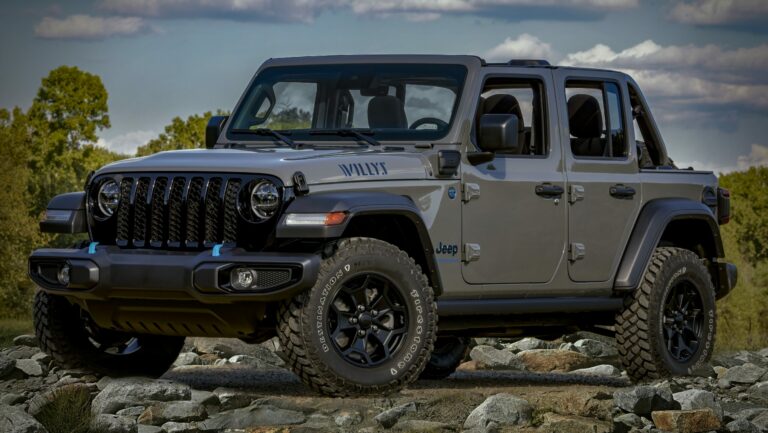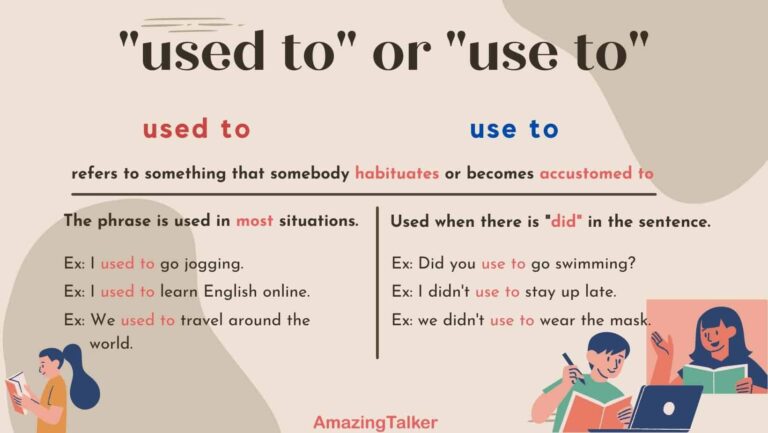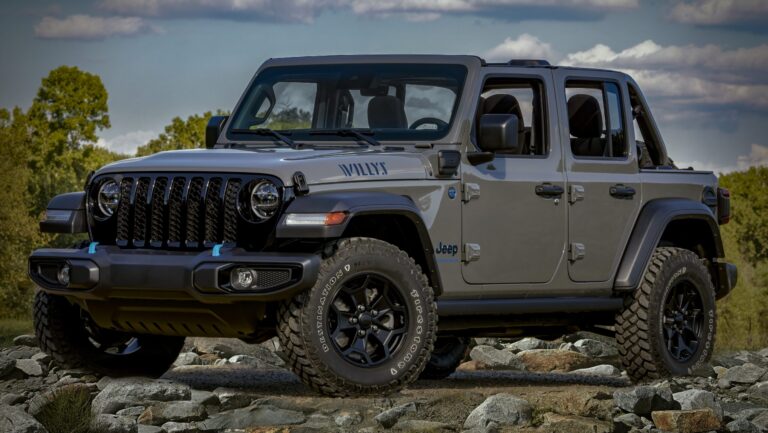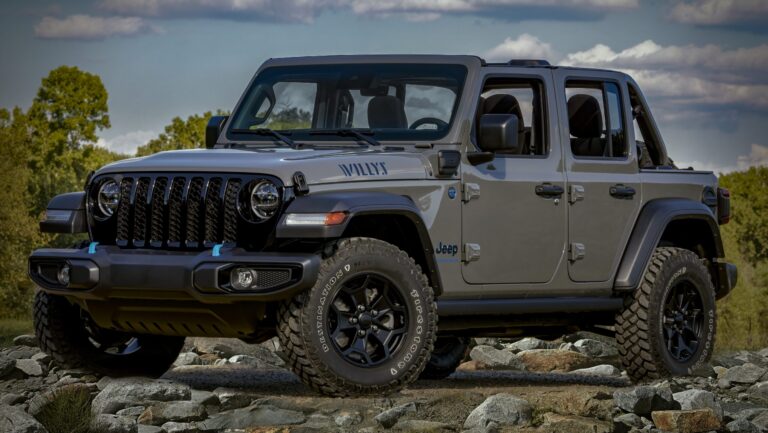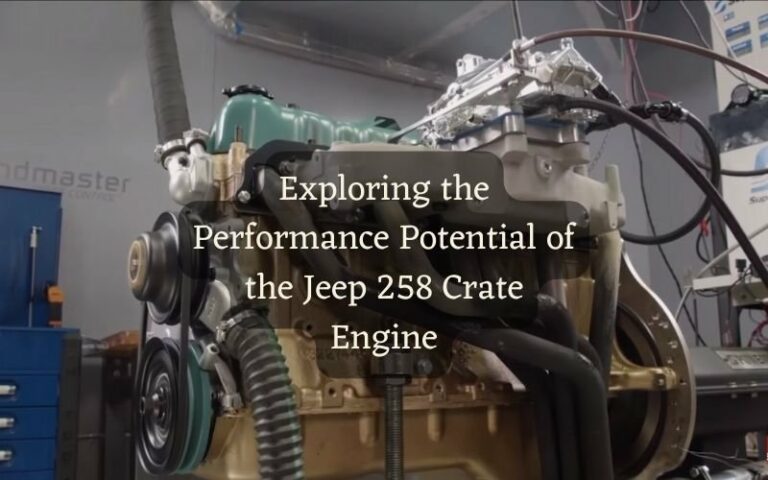How Much Does It Cost To Paint A Jeep Wrangler Unlimited?
How Much Does It Cost To Paint A Jeep Wrangler Unlimited? jeeps.truckstrend.com
The iconic Jeep Wrangler Unlimited is more than just a vehicle; it’s a statement of adventure, freedom, and rugged capability. Its distinctive design, from the removable doors and top to its bold stance, makes it instantly recognizable. Over time, however, even the toughest paint jobs can succumb to the elements, trail scratches, or simply the desire for a fresh new look. Whether you’re aiming to restore your Wrangler’s original glory, protect it from further wear, or embark on a custom color transformation, understanding the cost involved in painting a Jeep Wrangler Unlimited is crucial.
Painting a vehicle, especially one with the unique characteristics of a Wrangler Unlimited, is a significant investment. The price tag isn’t a one-size-fits-all number; it’s a dynamic figure influenced by a multitude of factors, ranging from the quality of materials and the complexity of the job to the reputation of the paint shop. This comprehensive guide will delve into every aspect of painting your Jeep Wrangler Unlimited, helping you navigate the options and make an informed decision that aligns with your budget and aesthetic goals.
How Much Does It Cost To Paint A Jeep Wrangler Unlimited?
Factors Influencing the Cost of Painting a Jeep Wrangler Unlimited
The cost to paint your Jeep Wrangler Unlimited can swing wildly, from a few hundred dollars for a basic respray to well over $10,000 for a show-quality finish. Understanding the variables that contribute to this range is the first step in budgeting your project.
1. Current Condition of Your Jeep’s Body
This is arguably the most significant cost driver. A vehicle with extensive rust, deep dents, or peeling clear coat will require far more labor-intensive preparation than one with minor scratches.
- Surface Prep: This includes washing, degreasing, sanding, and potentially stripping the old paint. The more severe the existing damage, the more time and materials needed.
- Bodywork: Dents, dings, and collision damage must be repaired before painting. Extensive body filler application and shaping add to the cost.
- Rust Treatment: Rust is a pervasive issue, especially on older or off-road Jeeps. Removing rust, treating affected areas, and applying rust inhibitors is critical for a lasting paint job and significantly increases prep time.

2. Paint Quality and Type
The type of paint chosen directly impacts durability, finish quality, and price.
- Enamel/Acrylic Lacquer: Less expensive, but generally less durable and prone to fading. Often used for basic, economy paint jobs.
- Urethane: The industry standard for most modern vehicles. It’s durable, resists chipping and fading, and offers excellent gloss retention. Available in single-stage (color and clear coat in one) or two-stage (base coat color, then separate clear coat). Two-stage is more expensive but offers superior depth and protection.
- Specialty Paints: Metallic, pearl, matte, candy, or custom mixed colors can be significantly more expensive due to complex pigments, multi-layer application, and higher material costs.
- Protective Coatings (e.g., Raptor Liner): For extreme durability and a unique textured look, many Wrangler owners opt for an exterior bedliner coating. This is a specialized application with its own cost structure.


3. Color Change vs. Same Color
Painting your Jeep the same color as it currently is generally costs less than changing colors.
- Same Color: The painter can often blend the new paint into existing areas like door jambs, under the hood, and inside the tailgate, minimizing the need for extensive disassembly or painting of these hidden areas.
- Color Change: To truly change the color, all visible surfaces must be painted, including door jambs, under the hood, inside the tailgate, and potentially the hardtop interior. This requires much more labor for disassembly, masking, and spraying, driving up the cost considerably.
4. Level of Disassembly
The more components removed from the vehicle before painting, the higher the quality of the finish, but also the higher the labor cost.
- Minimal Disassembly: Masking off trim, lights, and windows. Quicker, but edges may show masking lines or overspray.
- Moderate Disassembly: Removing lights, grilles, bumpers, and some exterior trim. Allows for better paint coverage.
- Extensive Disassembly: Removing doors, fenders, hood, hardtop, windshield, and all exterior trim. This ensures a factory-quality finish with no visible masking lines or overspray, but it’s very labor-intensive.
5. Paint Shop Reputation and Expertise
Just like any service, the skill and reputation of the paint shop play a huge role in pricing.
- Economy Shops (e.g., Maaco): Offer quick, low-cost options, often with minimal prep and single-stage paint. Good for a quick refresh or resale.
- Mid-Range Shops: Provide a balance of quality and cost, typically using two-stage paint and performing decent prep work.
- High-End/Custom Shops: Specialize in meticulous preparation, premium materials, and flawless finishes. They often handle custom colors, restorations, and show-quality work, reflected in their higher hourly labor rates. They may also offer warranties on their work.
6. Geographic Location
Labor rates vary significantly by region. Shops in major metropolitan areas or areas with a high cost of living will typically charge more than those in rural areas.
Breakdown of the Painting Process and Associated Costs
Understanding what goes into a professional paint job helps justify the cost. Each stage requires specific materials, tools, and skilled labor.
-
Preparation (40-60% of Total Cost): This is the most crucial and labor-intensive phase.
- Washing & Degreasing: Removing all dirt, wax, and grease.
- Inspection & Assessment: Identifying all dents, rust spots, and existing paint imperfections.
- Disassembly: Removing necessary components (lights, trim, bumpers, etc.).
- Sanding & Stripping: Feather-edging existing paint, or stripping it down to bare metal if extensive damage or a color change is desired.
- Bodywork & Rust Repair: Filling dents, smoothing surfaces, welding patches for rust, and applying body filler.
- Priming: Applying primer to ensure paint adhesion and provide a uniform base.
- Masking: Meticulously covering all areas not to be painted (windows, wheels, interior).
-
Materials (20-30% of Total Cost):
- Paint: Base coat, clear coat, activators, reducers, thinners.
- Primer: Adhesion, high-build, or epoxy primers.
- Sandpaper: Various grits for different stages.
- Masking Supplies: Tape, paper, plastic sheeting.
- Body Fillers & Putties: For surface imperfections.
- Rust Converters/Inhibitors: Essential for longevity.
-
Painting (10-20% of Total Cost):
- Spraying: Applying multiple thin coats of base color, followed by clear coat layers (for two-stage systems). This requires a climate-controlled paint booth and skilled technicians.
- Curing: Allowing paint to dry and harden between coats and after the final application.
-
Finishing & Reassembly (10-15% of Total Cost):
- Wet Sanding & Buffing: For high-quality jobs, this removes minor imperfections and creates a deep, glossy finish.
- Reassembly: Carefully putting all removed components back on the Jeep.
- Final Inspection & Cleaning: Ensuring everything is perfect before delivery.
Different Levels of Paint Jobs and Their Price Ranges
Here’s a breakdown of what you can expect at various price points for painting a Jeep Wrangler Unlimited:
| Paint Job Type | Estimated Price Range (USD) | What’s Typically Included | Best For |
|---|---|---|---|
| Economy/Basic | $500 – $1,500 | Minimal prep (light sanding, masking), single-stage enamel paint (no separate clear coat), often limited color options. Quick turnaround. Minor dings might be overlooked. | Budget-conscious owners, quick resale, covering minor imperfections, or temporary refresh where durability/finish quality aren’t primary concerns. Not recommended for long-term protection or high aesthetic expectations. |
| Standard/Mid-Range | $1,500 – $4,000 | Moderate prep (thorough sanding, minor dent/ding repair, some rust treatment), two-stage paint (base coat + clear coat), better quality materials, more color options, attention to detail around jambs/edges (but not full interior paint if color change). | Daily drivers, improving appearance significantly, maintaining resale value, or for those who want a good-looking, durable finish without going for show quality. This is the most common choice for a balance of cost and quality. |
| High-Quality/Premium | $4,000 – $7,000 | Extensive prep (stripping to bare metal, comprehensive bodywork, rust repair), high-quality urethane paint, multiple layers of clear coat, meticulous sanding/buffing, often includes door jambs/under hood if color change, minor component removal. | Enthusiasts, long-term ownership, restoring a classic Wrangler, or for those who demand a near-factory or better-than-factory finish with excellent durability and and depth of gloss. Expect a professional, long-lasting result. |
| Show-Quality/Custom | $7,000 – $15,000+ | Bare-metal restoration, custom body modifications (if requested), premium paint systems (pearl, metallic, custom colors), extensive clear coats, wet sanding and buffing to perfection, full disassembly/reassembly, often includes frame/underside work. | Collectors, custom build projects, show vehicles, or owners who want a truly unique, flawless, and highly durable finish that will stand out. Price varies significantly based on complexity of customization, custom graphics, or extreme color changes. |
| Specialty Finishes | $2,500 – $6,000+ | (e.g., Raptor Liner/Bedliner Exterior) – Application of durable, textured coating. Price varies by coverage (full exterior vs. specific panels), prep, and color. Excellent for off-road protection. | Off-road enthusiasts seeking extreme durability, scratch resistance, and a unique matte/textured look. Ideal for Jeeps that see heavy trail use or for those who want to stand out from the crowd with a rugged, no-nonsense finish. |
| Additional Costs | Varies | Extensive rust repair, major dent removal, custom graphics, pin-striping, two-tone paint, wheel painting, undercoating, removal/reinstallation of aftermarket accessories, headlight/taillight restoration. | Any specific needs beyond a standard paint job. These are add-ons that can significantly increase the total cost, depending on the complexity and labor involved. Always get a detailed quote for these specific items. |
DIY vs. Professional Paint Job
The allure of saving money often leads Wrangler owners to consider a DIY paint job. However, it’s crucial to weigh the pros and cons honestly.
DIY Paint Job
- Pros: Significantly lower cost (primarily materials), personal satisfaction.
- Cons: Requires specialized equipment (compressor, spray gun, proper ventilation, respirator), significant skill and experience for a good finish, considerable time commitment, high risk of poor results (orange peel, runs, fisheyes, uneven coverage), safety hazards from fumes, and lack of warranty. A poorly executed DIY paint job can actually decrease your Jeep’s value and be more expensive to fix later.
- Recommendation: Unless you have professional experience, proper equipment, and a dedicated space, a full vehicle repaint is not recommended for most DIY enthusiasts aiming for a high-quality finish. Minor touch-ups or specialty coatings like Raptor Liner (which is more forgiving) might be suitable DIY projects.
Professional Paint Job
- Pros: Superior quality finish, proper adhesion and durability, access to professional-grade materials and equipment, controlled environment (paint booth), skilled technicians, time-saving, and a warranty on the work.
- Cons: Higher upfront cost.
- Recommendation: For a lasting, aesthetically pleasing, and protective paint job that maintains or enhances your Jeep’s value, professional service is almost always the best route.
Tips for Getting the Best Value and Outcome
- Get Multiple Quotes: Contact at least 3-5 reputable body shops. Don’t just ask for a price; ask for a detailed estimate that breaks down labor, materials, and specific work to be done.
- Check References and Reviews: Look at online reviews (Google, Yelp), ask for customer testimonials, and ideally, inspect their previous work in person. A good shop will be proud to show off their completed projects.
- Discuss Warranty: Inquire about the warranty offered on both materials and labor. A reputable shop will stand behind their work.
- Be Clear About Expectations: Communicate your desired outcome clearly. If you want a show-quality finish, be prepared to pay for it. If you’re on a budget, understand the limitations.
- Consider Partial Prep (with caution): Some shops might allow you to do some initial cleaning or remove certain accessories yourself to save on labor, but confirm this with them first. Do NOT attempt bodywork or sanding unless explicitly agreed upon and you have the necessary skills.
- Ask About Paint Brands: Higher-quality paint brands often correlate with better durability and finish.
- Address All Body Issues Upfront: Make sure the shop includes all necessary dent, rust, and bodywork in the initial quote to avoid surprise costs later.
Frequently Asked Questions (FAQ)
Q1: How long does a professional paint job on a Jeep Wrangler Unlimited last?
A1: A high-quality professional paint job using urethane paints and proper clear coats can last anywhere from 5 to 10+ years, depending on environmental factors, how well it’s maintained, and the quality of the initial prep work. Economy paint jobs may only last 1-3 years.
Q2: Does painting my Jeep affect its resale value?
A2: A high-quality, professional paint job can significantly enhance your Jeep’s resale value, especially if it restores a faded or damaged original finish. A poor-quality, cheap paint job, however, can detract from its value.
Q3: What’s the best type of paint for a Jeep Wrangler Unlimited?
A3: Two-stage urethane paint (base coat + clear coat) is generally considered the best balance of durability, appearance, and cost for a daily driven or moderately off-roaded Wrangler Unlimited. For extreme off-road use, an exterior bedliner coating like Raptor Liner offers unparalleled scratch and chip resistance.
Q4: How long does the painting process typically take?
A4: An economy paint job might take 2-3 days. A standard to high-quality job, including proper prep and drying times, can take 1 to 3 weeks. Show-quality or custom jobs with extensive bodywork and disassembly could take a month or more.
Q5: Should I fix all dents and rust before getting my Jeep painted?
A5: Absolutely. Any reputable shop will insist on fixing all dents, dings, and rust before painting. Paint will not hide imperfections; in fact, it often highlights them. Fixing these issues upfront ensures the longevity and quality of your new paint job.
Q6: What’s the difference between single-stage and two-stage paint?
A6:
- Single-Stage: The color and clear coat are mixed together and applied in one layer. It’s quicker and cheaper but generally offers less depth and durability than two-stage paint.
- Two-Stage: The color (base coat) is applied first, followed by separate layers of clear coat. This provides superior gloss, depth, UV protection, and durability, as the clear coat is the primary protective layer.
Q7: Is it cheaper to paint my Jeep the same color or change colors?
A7: It is almost always cheaper to paint your Jeep the same color. Changing colors requires painting areas that are typically not visible (like door jambs, under the hood, and inside the tailgate), which significantly increases the labor involved in disassembly, masking, and spraying.
Conclusion
Painting your Jeep Wrangler Unlimited is an investment that can dramatically transform its appearance, protect its body from the elements, and even enhance its resale value. The cost is a direct reflection of the quality you desire, the extent of necessary preparation, and the expertise of the paint shop you choose.
While the temptation of a low-cost paint job can be strong, remember that shortcuts in preparation and materials often lead to disappointing results and a shorter lifespan for the finish. For a vehicle as iconic and beloved as the Jeep Wrangler Unlimited, investing in a mid-range to high-quality professional paint job is usually the wisest decision. By understanding the factors involved, getting detailed quotes, and choosing a reputable shop, you can ensure your Wrangler rolls out looking as adventurous and ready for anything as ever, with a finish that truly lasts.


